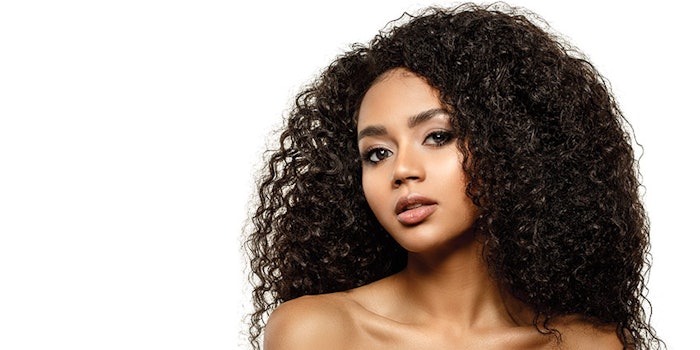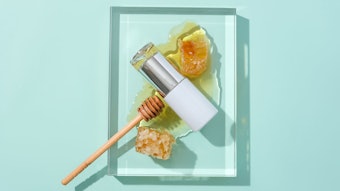
To read this article in its entirety, click through to your February 2020 digital magazine.
The Andre Walker Hair Typing System, created by celebrity hair stylist Andre Walker, categorizes hair into four types: Type 1 (straight), Type 2 (wavy), Type 3 (curly), and Type 4 (kinky/coily). Types 2, 3 and 4 belong to the textured hair category, whose sub-classifications from a to c (see Figure 1) are characterized by the spacing between each curve and the diameter of the wave, curl or coil.
Regardless of ethnicity, 63% of the U.S. population has textured hair, and all three textured hair types are observed across all racial groups. Although Types 2 and 4 occur more prevalently in white and black Americans, respectively, both groups have similar likelihoods to possess Type 3 hair.1 Recognizing the diversity of textured hair types in Americans, regardless of ethnicity, it should come as no surprise that 71% of women with textured hair prefer to buy products specifically for their hair texture rather than ethnicity.2 For these reasons, herein hair will be described according to hair type or texture, not ethnicity.
Over the years, these women have increasingly embraced wearing hair in its natural state. As such, chemical straightening has become less common, resulting in hair relaxer sales steadily declining over the last decade2—along with a corresponding increasing demand for products focused on maintaining naturally textured hair condition health. To this end, the current work aimed to develop test methods using naturally textured hair, i.e., Types 2, 3 and 4, to support the claims substantiation of products and ingredients specified for these hair types.
As a first step, preliminary trials assessed the feasibility of an existing combing test method used internally at the authors’ company for Type 1 hair with or without modifications for textured hair samples. This paper summarizes these findings, as well as the feasibility of using prepared hair or hair extensions as a substitute for naturally textured hair samples during combing studies.
Materials and Methods
Hair swatches: The described combing method for Type 1 hair uses an apparatus customized to allow hair swatches to be pulled through a set of combs while a 500-N load cell measures the required force to comb the hair along the swatch length. This data is then monitored and recorded using software.
To assess the feasibility of using the apparatus to comb textured hair, combing experiments were conducted with different textured hair types. Due to textured hair sourcing limitations, only natural Types 2 and 4 hair were procuredb for this study; an alternative for Type 3 is discussed below. Figure 2 shows the hair swatches, which demonstrate the loose wave pattern and wiry, coiled pattern of Types 2 and 4, respectively.
Recalling that Figure 1 depicts multiple distinct wave and coil patterns for each type of hair, and that hair characteristics, i.e., curvature, softness, strength, etc., vary from person to person, it should be noted that: 1) the naturally textured hair swatches were loosely categorized as Types 2 and 4 based on their general texture/curvature, and 2) all quantitative data reported herein is specific to the particular hair swatches used for the present study.
The standard protocol for dry combing Type 1 hair was modified for combing textured hair samples in a wet state.
At least four swatches per hair type were used for this experimental series. The swatches generally had a mass of ~3 g and an average length of ~180 mm. All experiments were conducted at ~40% relative humidity ~21°C.
Due to the smoothness of naturally Type 1 hair, minimal friction is observed between hair and the combs, and meaningful combing work measurements can be difficult to obtain. However, bleached Type 1 hair is damaged, therefore friction results when it passes through the combing apparatus, in turn providing a meaningful combing work measurement. For this reason, combing data was also collected with 5% peroxide bleached Type 1 hair swatches, to provide a baseline comparison for combing measurements collected with textured hair swatches.
Hair preparation and combing apparatus: Each hair swatch was detangled using a wide tooth comb with spacing as depicted in Figure 3. The swatches were the submerged in deionized (DI) water to “swell” or saturate hair strands. Prior to automated combing, each swatch was placed under a warm running water stream (1 LPM and 35°C) while being detangled with the wide-tooth comb. Internally at the authors’ company, the combing system is typically configured with double fine-tooth combs for wet Type 1 hair swatches. Double, normal tooth-spaced combs are used to accommodate Type 1 hair volume and rigidity in its dry state. This difference in comb teeth spacing can be seen in Figure 4.
It should be noted that untreated, textured hair swatches are generally more voluminous in both dry and wet states, compared with Type 1 hair swatches of similar mass and length. Also, due to their wavy, curly or coily patterns, textured hair swatches have a greater potential for more curves and tangle points during combing. It was therefore hypothesized that a wider tooth-spaced comb would allow the textured hair to pass through the comb teeth without becoming entangled, yet still provide enough friction between the comb and hair to obtain meaningful combing work measurements.
The standard protocol for dry combing was then modified for combing the textured hair samples in the wet state, and the dry comb, i.e., the normal tooth-spaced comb shown in Figure 4, was designated as Comb A. Since textured hair is typically combed in its wet state, only wet hair swatches were used for the described combing experiments. To achieve a random experimental order, the swatch type and identification number order were varied throughout the experiments.
With a swell time of 90 min, hair apparently became oversaturated, making strands soggy and misaligned, and increasing fiber friction.
Hair swell time vs. hair type: As noted, hair swatches were swelled with DI water for 30 min (i.e., single swell), 60 min (double swell) or 90 min (triple swell) to assess whether the hair drying rate or measured combing work for each hair type varied with the swelling duration.
Hair mask performance screening: Hair product performance was addressed next to assess whether differences could be detected between untreated and conditioned textured hair swatches, and various conditioners’ performance on textured hair swatches. Two commercially available, deep conditioning masks were selected as benchmarks. For anonymity, the masks will be referred to as Mask D and Mask S, herein.
Both masks are specifically marketed to textured hair consumers but utilize different primary ingredients: Mask D used glycerin, cetearyl alcohol, cetyl esters and glycol distearate; Mask S used cetyl alcohol, coconut oil, behentrimonium methosulfate and shea butter. After a thorough cleansing, two of each hair swatch types were separately treated with approximately 1 g of the deep conditioning masks. The masks were left on the hair swatches over night to simulate the common textured-hair consumer treatment practice.
The treated swatches were then placed under warm running water (1 LPM and 35°C) until the rinse water ran clear or a minimum 1-min duration was reached. The subsequent combing studies were performed in the Comb A configuration. This process was repeated for each hair swatch and mask type.
Prepared hair Type 3 substitute feasibility: As noted, natural Type 3 hair swatches could not be procured; however, a substitute for natural Type 3 hair was desired to support the combing method validation for all textured hair types. Prepared Type 3 hair samples were therefore obtained from two positively consumer-reviewed Type 3 hair extension manufacturers, as well as a supplier for naturally textured hair. The starter hair source was natural Type 1, and this hair was high-steamed or boiled, respectively, to achieve the intended Type 3 hair pattern. For anonymity purposes, the prepared Type 3 hair swatches will be referred to as H Hair, I Hair and K Hair, herein.
The prepared hair was thoroughly cleansed to remove any surface product. Since each hair type was advertised as being of human origin, a representative hair strand from each prepared hair type was inspected using a high-magnification microscope to confirm a hair cuticle could be detected. After a 60-min swell preparation, each hair swatch underwent combing studies in the Comb A configuration.
Hair comb type screening: Since textured hair is known to be prone to breakage, as stated, it is typically combed in its wet state using a wide tooth-spaced detangling tool. To minimize the risk for inducing damage on textured hair swatches, the Type 1 hair combing apparatus was modified to accommodate various wide-toothed combs.











